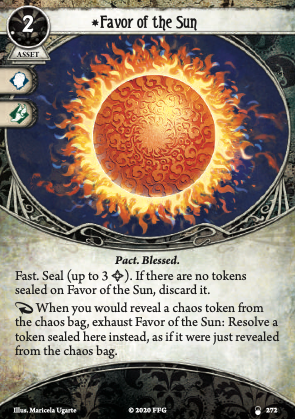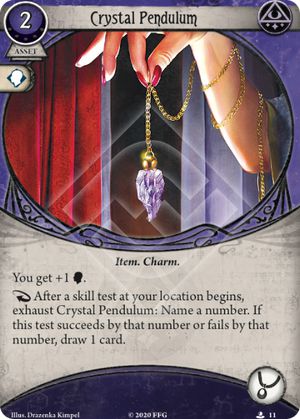
The most powerful card in the game
The payoff for playing this card is gigantic, especially in higher player counts. In a 4 player game it skips a minimum of 4 encounter cards, and sometimes more because of surge effects. It works no matter the type of encounter card either, so perils and enemies are indiscriminately blasted from existence.
You could argue that you don't get to choose the encounter cards you want to cancel, and that you're not really cancelling them but instead delaying them. Both those points are true, but ultimately every time you play this card in a 4 player game you're seeing 4+ less encounter cards during the scenario.
When played early you get incredible tempo setting up and getting ahead of the game. Played late you get certainty in closing out the scenario or pushing for more victory points.
What's the cost of this incredibly powerful effect you ask?
- 1 resource
- 5 bless tokens
Now Survivors might not have the most powerful economy but 1 resource is a pitiful amount even for them!
Ah, but it costs 5 tokens, those must be difficult to come by at least? Nope, turns out blessing generation is incredibly easy. Even in class Survivors have great access to easy low cost generation with:
- Keep Faith (0)
- Predestined (0)
- Signum Crucis (2)
- Spirit of Humanity (2)
and also the neutral:
- Tempt Fate (0)
It's fairly trivial to keep the chaos bug stuffed full of tokens all game with very little investment.
But wait, this card is in Survivor , a class with a primary mechanic of card recursion. Even with a simple 0xp investment of 2x Resourceful and 2 x Scrounge for Supplies, both already commonly played cards, you can play this 6 x per deck rotation. With further Survivor shenanigans you'll be able to replay it much more than that.
Not only is the effect incredibly powerful it's also very un-fun, Arkham is a game of fighting against the odds and battling against adversity. You'll occasionally be able to breath a sigh of relief as your Mystic plays a Ward of Protection against an Ancient Evils. However, this card allows you to pretty much skip the challenges that game would try and throw at you.
It's so powerful that if you're only aim is to win then I can't see any Survivor deck not spending their first 6xp on 2 copies of this. I don't know what happened in the balance meeting when this card was discussed. I can only assume that it was thought that generation would be much harder than it actually is, as a number of bless based card in this cycle seem way overtuned. Once you realise bless generation is trivial this card is obviously busted just by reading the text box.
Summary:
- Incredibly powerful effect
- Very low setup and cost to play
- No downsides
- Easily recurred
Absolutely needs taboo, completely game breaking.



